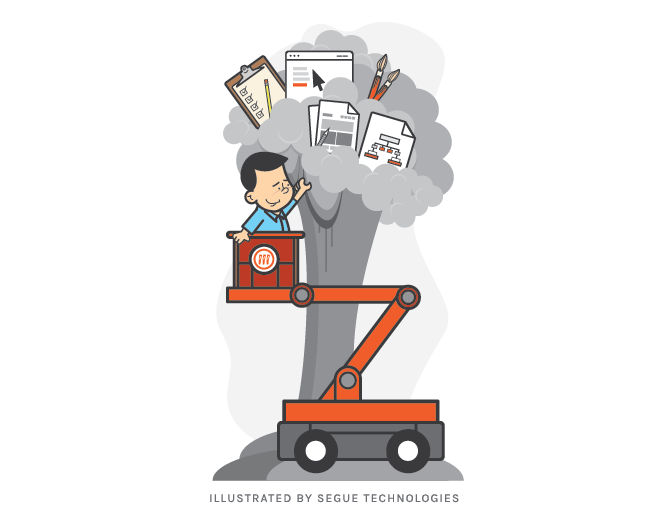In today’s world there are always budget restrictions or other limitations like resources or time that prevent a User Interface (UX)/Design team from being fully engaged throughout an entire project life cycle. This can lead to tough decisions being made about cost of UX Design support during project development and estimation, and is one challenge that UX pro’s are constantly trying tackle. How do we provide our clients with the best user experience within the time and budget available? One approach is to “cherry pick” components of UX and design and apply them strategically.

User Experience (UX) and Design
In a perfect “project workflow” world, UX and Design typically touch or overlap all phases of project development from beginning to end. From collecting project requirements (pre-project), to prototyping and design, then testing, and launching the product (post-project) – just to name a few.
User Experience and Design go hand in hand, and typically involvement will vary depending on the type of project. However, you can bet your bottom dollar that most of these items will need to be addressed by a UX/Design hero at some point during project execution:
- Proposal Development and/or project estimation
- Requirements gathering and fact finding
- Team Kick-off meeting
- Information architecture and wireframe development
- Prototyping
- Front end Development (creating working prototypes or fully developed pages)
- Product QC
Where You Can Bring in UX and Design to Enhance Your Project
Luckily for customers, there are a lot of options on when to bring in UX/Design help and how it can be applied to enhance their projects at any phase. So, If you’re late to the game or you just need a little help along the way, here are a few ala carte items you can hire a UX/Design hero to help with. Whether you make use of one or many, of these exercises, the finished product will be better all around, and inevitably improve your project from day 1 (or day 50, depending on how far along you already are):
- Heuristic Review– Before you redesign a site, it’s worth investing in a heuristic review by a UX professional. In return you will get a list of best practice fixes that should be implemented to improve user experience before you start the redesign.
- Card Sort exercise– If you’re in need of a new menu structure or want to improve an existing one, bring in a UX hero to complete a cardsort exercise. The outcome will determine a good starting point for your information architecture and provide suggestions on how to group information on each page based on user input.
- Low Fidelity Wireframes– Get a preliminary wireframe mocked up before you delve into costly development tasks. Use this as a testing tool to get feedback on flow and navigation, focusing on usability, without the design details to distract the user. Wireframes typically help identify issues with the structure of your website. .
- Mood Board– A mood board is a collage that invokes the styling and design direction for the product in question. It doesn’t breakout each design on a page by page basis but it compiles the treatment for the overall design into one document that can be reviewed by the client.
- Hi-Fidelity Design– Have a designer apply some bells and whistles to your rough mock up to see how it looks and to make sure everything fits as planned. This is also extremely helpful when the design is passed along to development, and should be used as a guideline for how the front facing design will look when it’s complete.
- Early design testing– A good Usability expert can make some great suggestions on prototype changes after testing as little as 3-5 people. Note: Keeping costs down in this area will require more work on your side like finding the users but will yield very useful feedback that can be implemented before the product is launched.
- User Best Practices–Bounce some ideas off of a UX Pro to help keep the product in line with where it should be going and to get some valuable feedback or tips on areas you can improve. Sometimes little changes make the biggest difference.
Here are some software tools that can be used on a few of the items listed above:
- Heuristic Review
Heuristic Review template - Cardsorting
Optimal WorkShop
Concept Codify
UX Sort - Wireframe Software
http://www.axure.com
http://www.gliffy.com
http://www.mockflow.com - Mood board development
How to Create a Mood Board
Mood Board Tool - High Fidelity Designs
Adobe Photoshop
Adobe Illustrator
The key to getting effective and useful information from your UX/Design hero is to bring them into the project as early and often as possible. There are several tools available online to help with a few of the items above but having a trained professional performing them will yield the best results and get you the biggest bang for your buck!